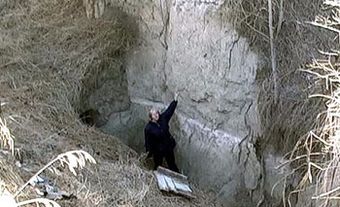Applied Anthropology
Applied anthropologists use their knowledge of peoples and cultures for practical purposes. They do this framed by anthropological concepts and a methodology - ethnographic fieldwork - that portrays people in their actual circumstances. Social soundness studies investigate how broad policies, such as health promotion, might work or need specific revisions with a particular people before being implemented. Through needs assessments, on a topic such as immigrant seniors, anthropologists discover what peoples' unmet needs are. A program evaluation assesses an existing program as to how well it is working according to its original goals. A Social Impact Assessment anticipates what the effects of large-scale development, such as dams, pipelines, oil and gas drilling, uranium mining, clear-cutting forests, community relocation, and the building of new towns, will be upon local peoples and their ways of life - especially as related to the land. Anthropologists might do advocacy, performing a kind of "whistle blowing" when social injustice has been done. As an example of that, Newfoundland anthropologist Elliot Leyton wrote Dying Hard (1975) and appeared on radio and TV documenting the deaths, poverty, and poor health of miners working in the fluorspar industry. He advocated major redresses because their conditions or those of their widows were ignored by government and industry.
In these types of work, applied anthropologists are largely working as policy scientists. They make their special contributions through capacities to interpret communities and institutions from insiders' perspectives and in being able to identify pertinent cultural factors. Overall, applied anthropologists contribute ground-level, bottom-up perspectives and recommend approaches that have a chance of actually working. Costly mistakes and social conflicts can come through top-down planning by policy-makers who know little about their intended beneficiaries. Furthermore, policy-makers are frequently unaware of how their values have shaped policies that they mistakenly assume will work with people from different cultures.
History of Applied Anthropology
Applied anthropology in Canada emerged during the 1950s and '60s. The earliest works focused on the circumstances of Aboriginal Peoples peoples and the North. The most significant was A Survey of the Contemporary Indians of Canada (1967), commissioned by the federal government and coordinated by Harry Hawthorn and Marc-Adélard Tremblay. Recommendations are still part of evolving relations toward self-determination (see Self-Government) and "citizens plus" status for First Nations peoples. Another significant example is the work begun in the early 1970s by Richard Salisbury and a group of anthropologists at McGill and McMaster universities. Their policy research was directed to the social and economic well-being of the James Bay Cree regarding the impacts of massive hydro-electric projects (see James Bay Project). Another anthropologist, Milton Freeman, is notable for his collaborative work with Inuit in making recommendations for resource use in the establishment of the Inuit territory of Nunavut, a milestone in Native self-determination.
Since the 1960s, Canadian Anthropology has matured, diversified, and expanded. Canadian applied anthropologists have worked domestically in areas such as fisheries, mining, agriculture, health (see Public Health), education, the environment, technology, immigration, race and ethnic relations, poverty reduction, urban renewal, youth, the elderly, multiculturalism, biotechnology, and gender. They also work in international development through agencies such as Canada's International Development Research Centre.
Applied anthropology is most frequently seen in public policy contexts, with anthropologists advising federal, provincial, municipal, and First Nations governments. Yet there is a growing use of applied anthropology in private sectors, such as with immigrant aid societies, multicultural associations, United Way agencies, and overseas nongovernmental organizations. Surprisingly, the most rapidly growing area of applied anthropology is that of business and industrial anthropology where researchers investigate working conditions, marketing strategies, corporate cultures, and international joint ventures. These are all logical anthropological topics in this era of economic globalization where cultural differences loom large.

 Share on Facebook
Share on Facebook Share on X
Share on X Share by Email
Share by Email Share on Google Classroom
Share on Google Classroom


